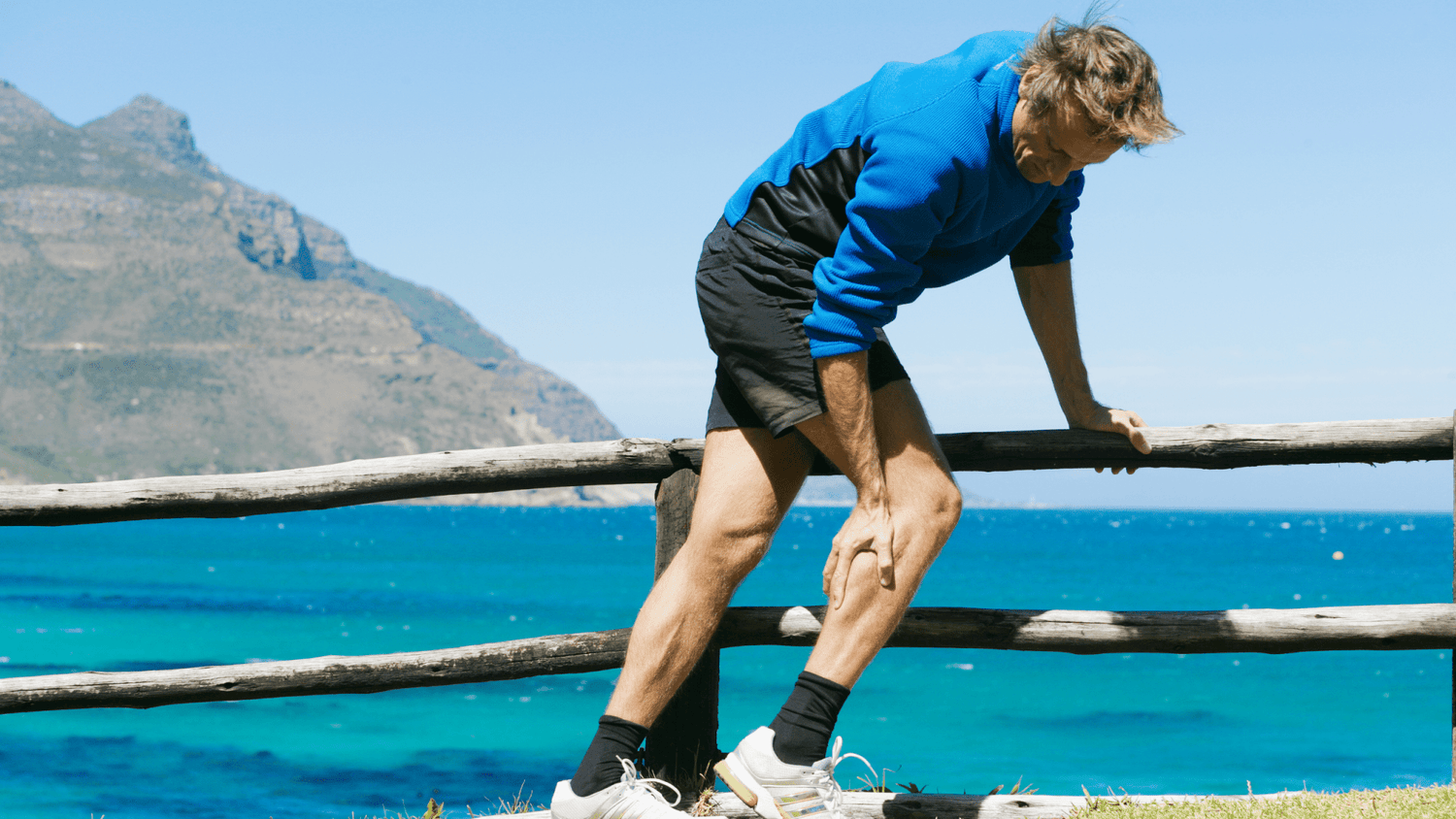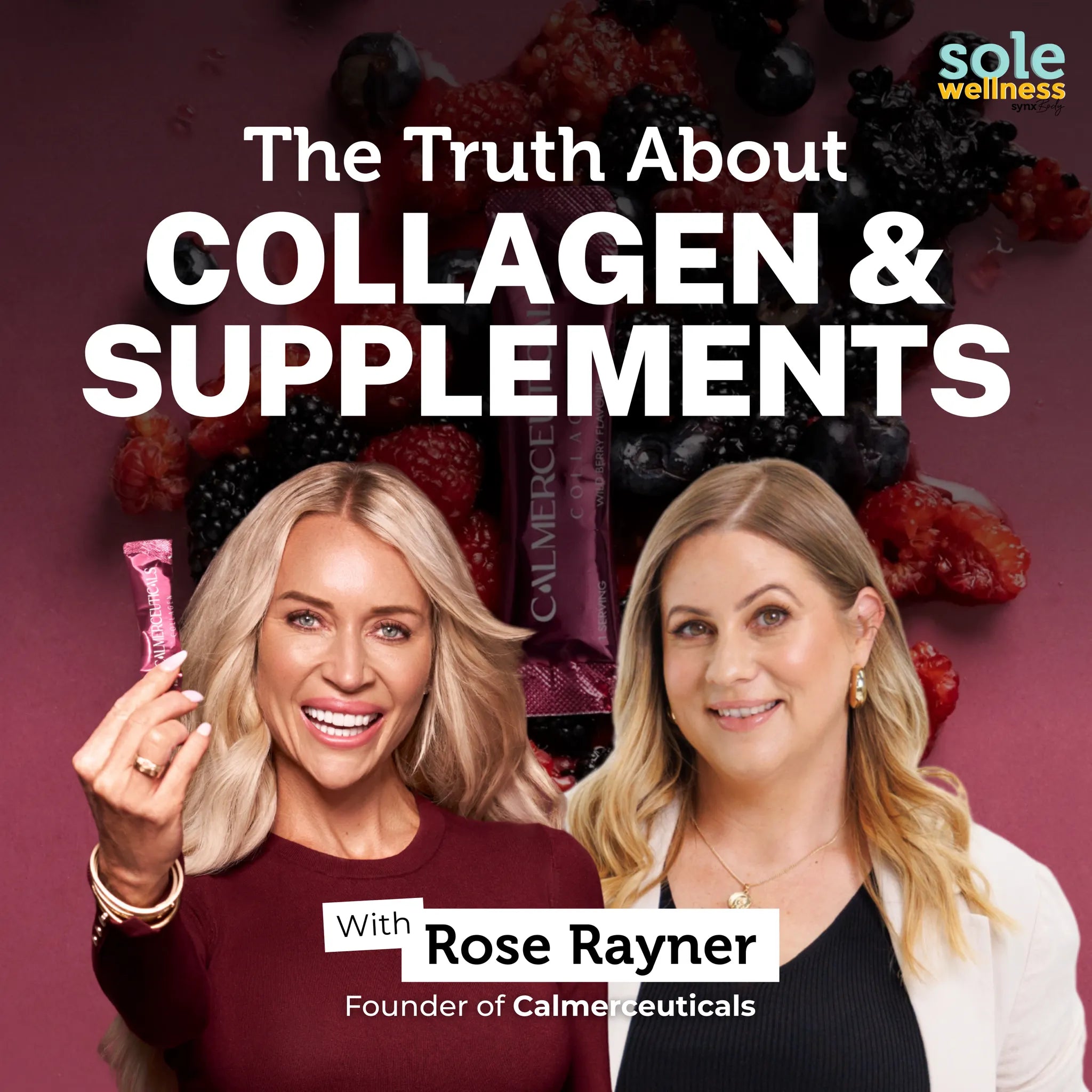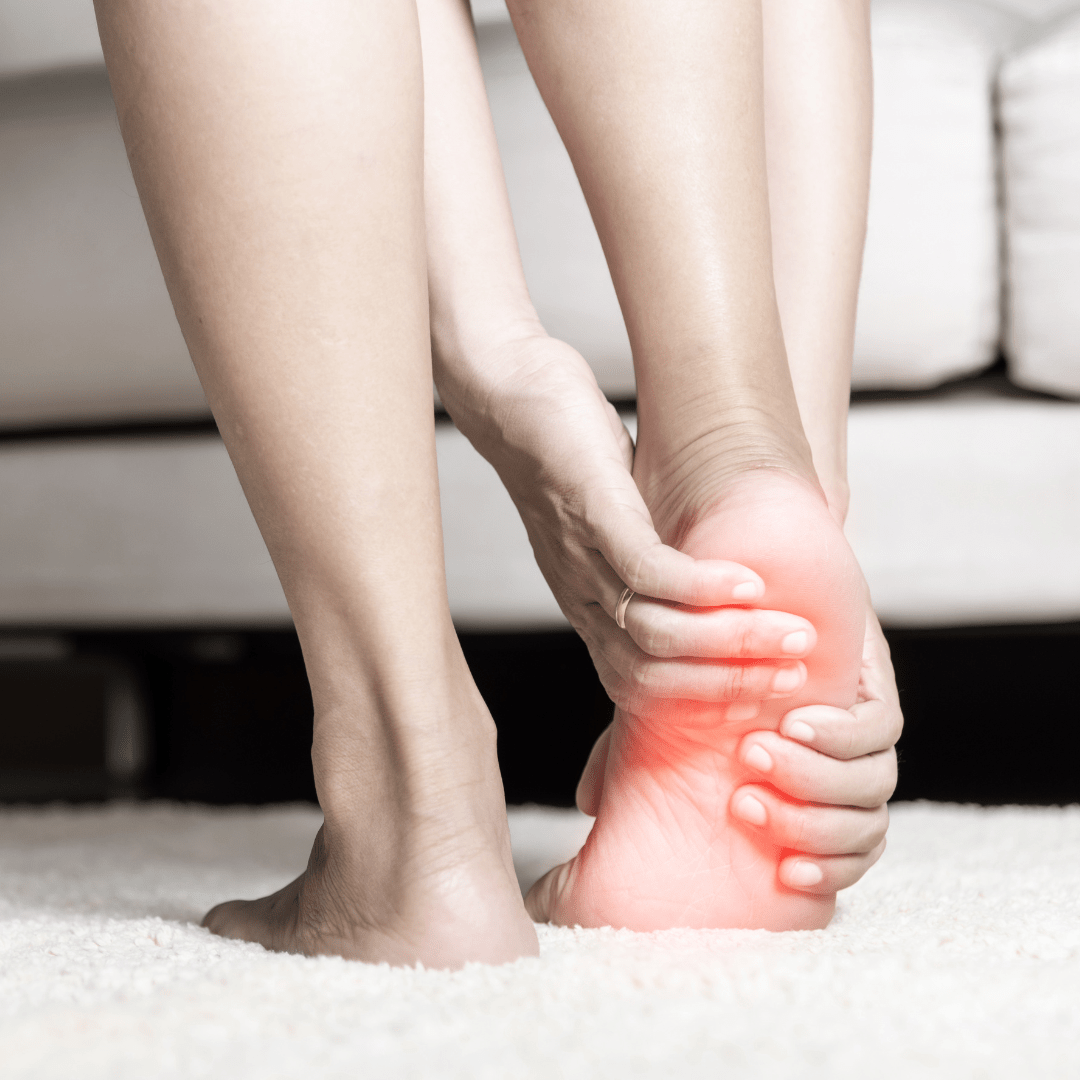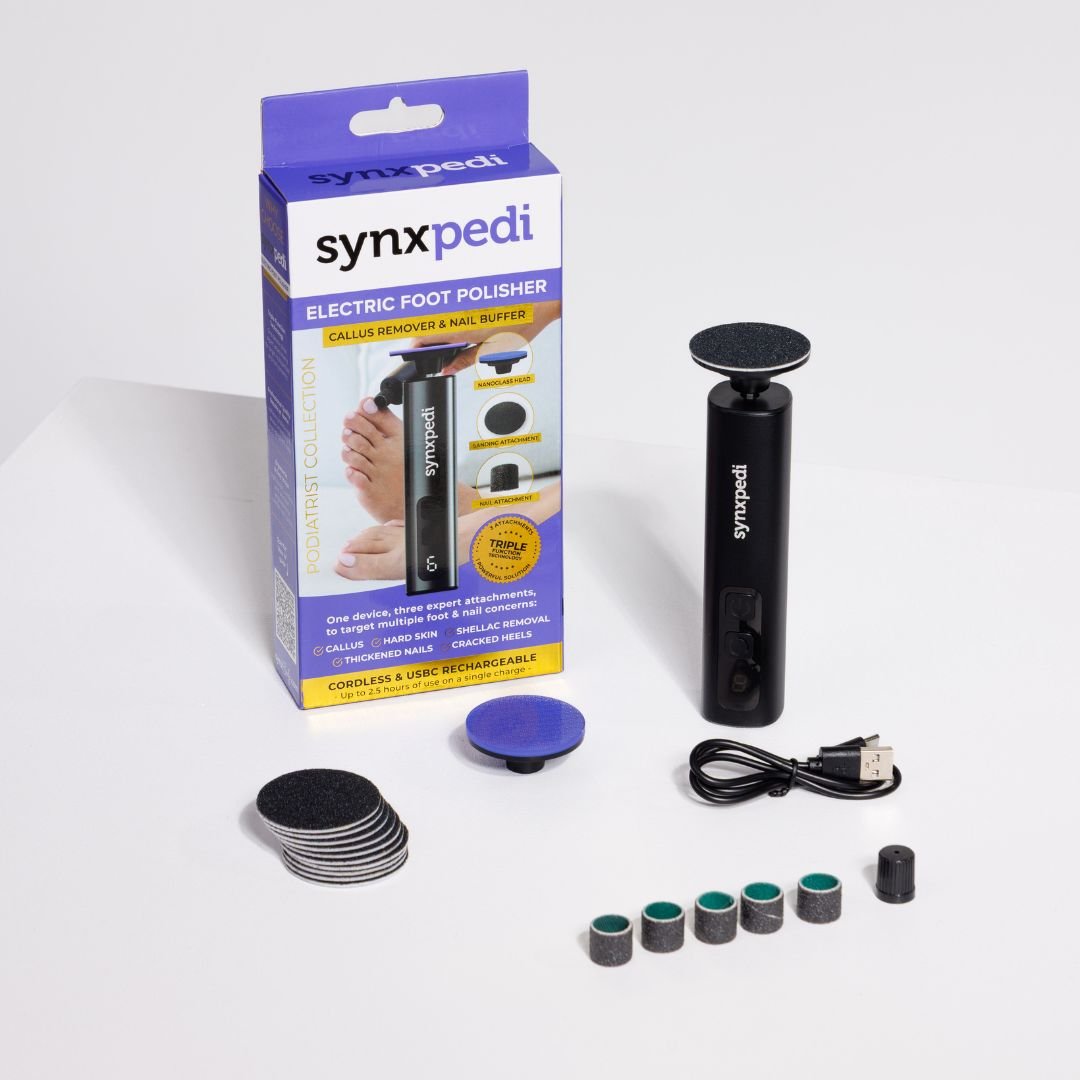Calf pain often results from excessive strain due to over-training, increasing running distance too quickly, or changes in running style or technique. This can lead to aching muscles, hardening of the calves, cramps, and pulled muscles.
So, what can you do to prevent tight calves when running? Here is some expert advice and some simple changes you can make to keep your calves in top shape.
1. Improve Ankle Range of Motion:
Did you know that by working on muscles and joints you can improve your ankle range of motion and relieve tightness in your calf? If you’re an active runner, you will need to maintain this range of motion by ensuring you do maintenance at home and with health professionals regularly.
Ankle Joint: see a podiatrist or physio to have joint mobilisations in your foot and ankle. You have 33 joints in your foot and ankle, and it’s vital to make sure they are all working optimally to ensure everything is firing in optimal sequence. If you have a stiff or blocked cuboid bone for example, this can lead to tightness in your peroneal (calf) muscles, which can cause tightness on the outside of the leg.
Muscles: Deep tissue massage, trigger point release and acupuncture to ensure muscles are loose, and lengthened to reduce the risk of injury and improve mobility.
You can also prevent tightness in calf muscles by addressing tightness in the foot. Use a Deep Roll Vibrating Massage Roller, like the RelaxaPulse. This device can help reduce tightness in the calf muscles by relieving tension along the Achilles tendon. Regular foot and body massages improve circulation, and reduce the risk of injury. Using tools like the RelaxaPulse can provide a deep tissue massage, helping you recover faster and relieve pain naturally.
For a detailed guide on the Relaxapulse massager, check out these explainer videos below:
2. Exercises:
- Wall Squats: This exercise is designed to build leg and core strength. Stand with your feet shoulder-width apart, and your back leaning against the wall. Slide down the wall until you are in a seated squat position. Hold at the bottom then return to the sanding position, making sure that your back always remains in contact with the wall.
- Plantar Flexion against resistance: This exercise is designed to strengthen the calf muscles and improve ankle mobility. Sit on the ground with one foot planted for support and the other slightly out in front. Place a resistance band or towel around the ball of the foot. Gripping the band/towel in both hands, push the foot down while keeping the heel in place. Return the foot to the neutral position in a controlled manner.
- Single Leg Calf Raises: These can be done whilst standing on flat ground, but are best done on a step or a stair. Stand on a step or stair, and hold onto a wall for support. Raise yourself onto the ball of your foot, then lower until your heel is below the edge of the step. Repeat.
3. Hydration:
Proper hydration is crucial, especially during long runs or hot days. Staying hydrated before, during, and after your run helps maintain electrolyte balance and prevents cramps. Opt for electrolyte beverages with little to no added sugar, to assist in maintaining this balance. Water also helps remove toxins from the body, deliver nutrients to cells, and regulate pH balance and body temperature, aiding in easing tension and tight muscles.
4. Nutrition:
Certain vitamin deficiencies can contribute to tight calf muscles:
- Vitamin B1. Helps convert carbohydrates into energy, fueling the body, brain, and nervous system.
- Vitamin C. An antioxidant that aids in the healing process of cells and may help with muscle pain.
- Magnesium – is an essential mineral that helps to keep muscles loose and mobile. Magnesium also helps to control muscle contraction so when you have tight and triggered calves, magnesium spray like Synxeaze Magnesium Recovery can help relax muscles, and be useful in maintaining muscle flexibility.
Before running, avoid foods high in protein, fibre, and fat as they can cause fatigue or cramps due to the energy required for digestion. Carbohydrates, stored in muscles as glycogen, are the primary fuel source during heavy training sessions and races. Maintaining your carbohydrate supply is crucial for endurance. For low-intensity activities like jogging, fat serves as the primary energy source, so consuming carbohydrates beforehand is less important.
5. Compression sleeves:
Compression sleeves help to improve blood circulation, which enhances oxygenation of the muscles, relieves swelling, assists in recovery, and reduces the risk of injury. Brands like Synxplus offer flight and recovery socks and foot & ankle compression sleeves with high compression levels, ideal for use after running.
6. Footwear:
Incorrect or worn-out footwear is a major factor in tight calf muscles. Proper alignment allows the foot to absorb impact and propel you forward. Unsupported high arches or overpronation due to flat feet, can cause uneven weight distribution and if you’re running long distances in shoes that are worn-out, you can make your calves unbelievably tight. Podiatrist-recommended insoles, like One Stop Insoles by Synxsole, can help maintain correct alignment and provide the necessary support.
7. Massage therapy:
Massage therapy prevents tight calves by targeting foot tightness. The RelaxaPulse helps reduce calf tightness, relieve Achilles tendon tension, improve circulation, and provide deep tissue massage for faster recovery.
Making these small changes can lead to a more comfortable and enjoyable running experience, allowing you to focus on reaching your fitness goals without the discomfort of tight calves. Stay proactive in your approach, listen to your body, and enjoy the many benefits of running with healthier, more resilient calves. Happy running!






